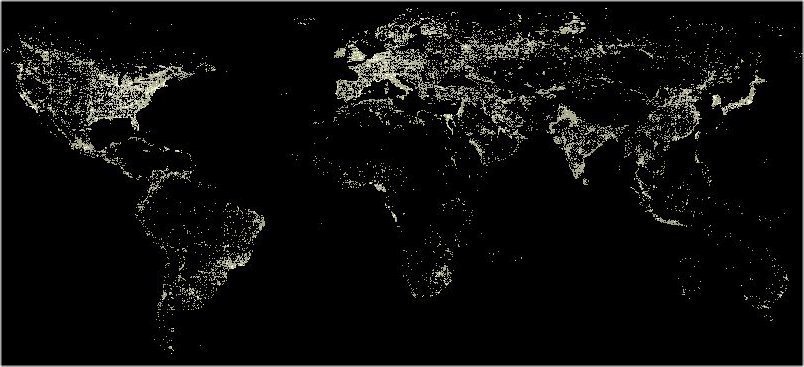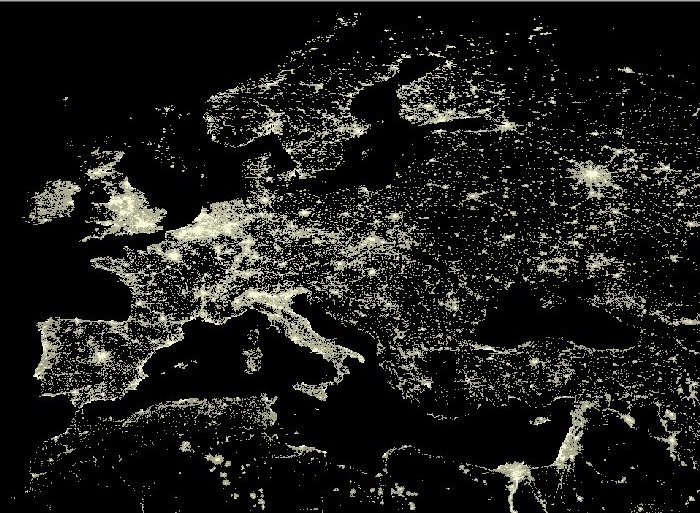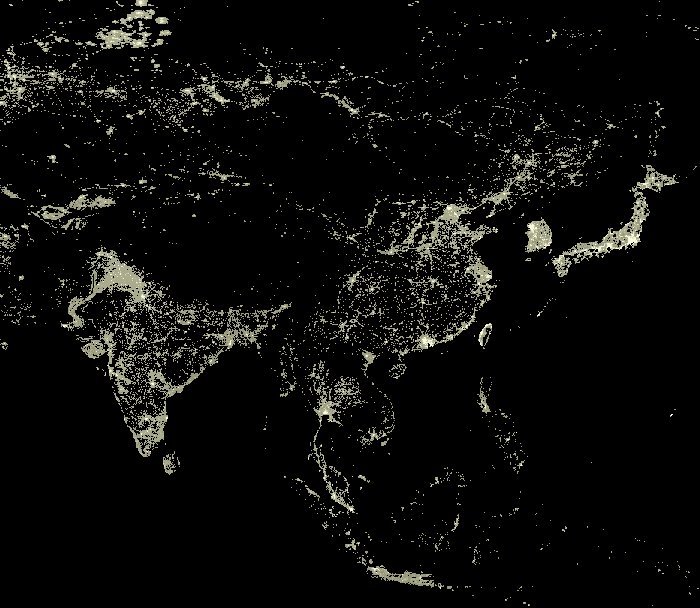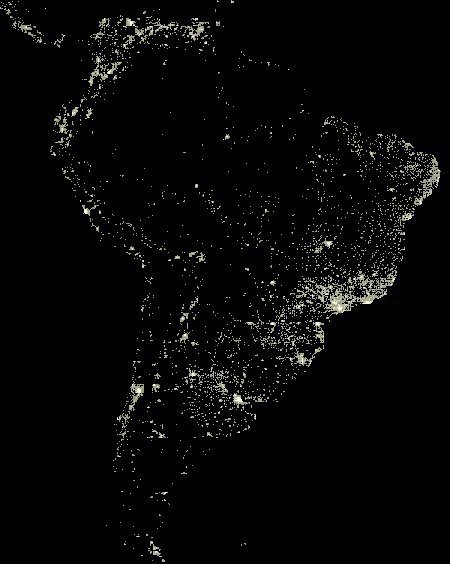Usually I write and publish text, with images
occasionally added where they are useful.
But
here it’s the other way round.
In this case, the substance is in the pictures.
Short captions are enough to explain the meaning.
These are, obviously, photographs from orbiting satellites.
But they are cleverly elaborated to look
“flat”
as we usually see in “planispheres” and other maps.
The Nighttime Lights of the World
projections
are developed by the National Geophysical Data Center.

A USA government
institution for worldwide
geophysical and environmental studies.
Let“s start with “nighttime lights” for the whole planet “planisphere”.
The World

The contrast is remarkable between the brightly lit and the dark areas.
Darkness isn’t only in deserts
and forests – it’s also where
there is low population density or electricity is scarcely available.
Europe

Obviously there is strong “nighttime light” in Europe.
The differences
are due to population density
rather than greater or lesser use of electricity.
(This image includes also part of North Africa and the Middle East.)
Asia

In Asia he picture is complex. There are vast uninhabited regions
(mountains, deserts)
but also large territories with low population density.
Some densely populated areas
lack electtricity – or anyhow have scarce “nighttime lights”.
An extreme example of contiguous diversity is the illumination
in
South Korea compared to the darkness in North.
North America

It’s pretty obvious that North America and Europe
have the highest intensity
of “nighttime lights”.
With a clearly visible difference: the greater
extension,
in America, of uninhabited or low population density areas.
South America

Wide territories are “dark” for absence or scarcity of human settlements.
And
there are many populated areas where for lack of resources,
but also cultural tradition,
lights don’t shine in the night.
This is one of many ways of looking at our planet
(particularly, human presence on its
surface.)
They are all interesting, intriguing. And they all help us to understand.
Every
different perspective increases our wealth of knowledge.
